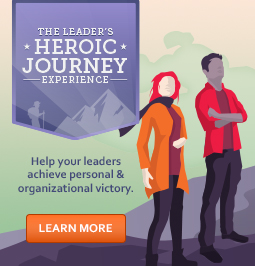By the time I was four years old, I already knew that the way I looked – my mouth was scarred from being born with a cleft lip and palate – made some kids not want to play with me. Nothing awful came of being rejected, but it did hurt. I wanted to stop people from being repelled by the mere glimpse of my face.
Without fully realizing what I was doing, I stumbled upon a strategy that is as remarkable in its simplicity to me now as it was then. Whenever some small moment of rejection happened, for example, a classmate taunted me on the playground or told me I looked weird, I thought something positive about the person. As a result, I hurt less. What was more, if I came up with something really fun to do, something that nobody else had thought of yet, that rejection turned into attraction. The kid who didn’t want to play with me all of a sudden did. In effect, I was practicing Asset-Based Thinking (ABT).
An Asset-Based Thinking mindset is the result of zeroing in on the positive facts about yourself, other people, and the situation you are in. At first I used ABT to ward off rejection. Later on, I found ABT strategies to make the most out of my best friendships and happiest moments.
Day after day, month after month, I practiced ABT. I found that when I was looking at the positive side of life, I felt more confident and creative. I had the energy and enthusiasm I needed to achieve my goals. And perhaps most importantly, I was open to receiving the love and encouragement from my family and friends who did accept me, facial scars and all.
Many years later, after becoming a psychologist, I learned the scientific basis for why shifting from a negative to a positive perspective made such a big difference to the quality of my experiences growing up. Those childhood experiences are a big reason why my focus as a psychologist has been to understand the underpinnings of resilience, optimism, self-confidence, and inspirational leadership. The results of my research and my practical experience have revealed that the ability to see what is strong, best, valuable, and possible is critical to building each of these essential internal resources.
So I invite you to begin your ABT practice by asking yourself these two seminal ABT questions at regular intervals throughout your day:
- What do I value and admire about whoever happens to be working against me in this moment?
- No matter the situation, what can I be doing to make it a more positive experience? In other words, what can I leverage to turn hurt and rejection into creativity and attraction?


